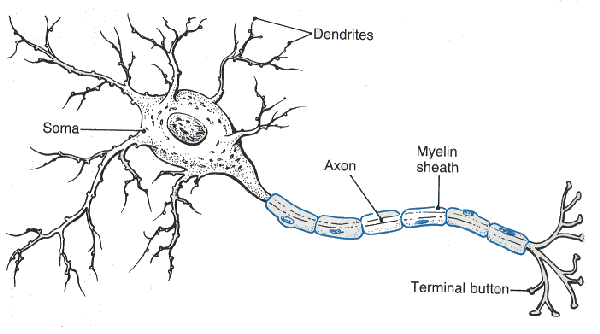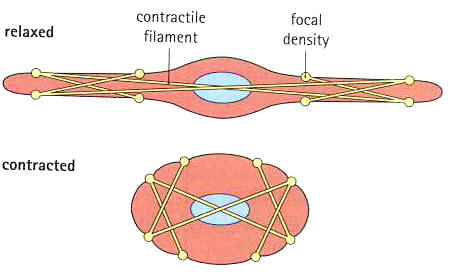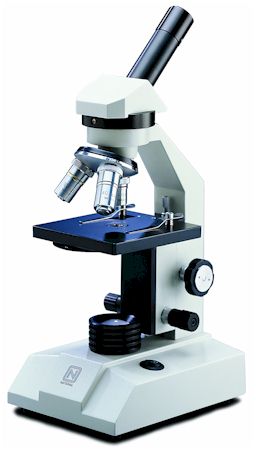
- •Lesson (1) Cell theory
- •Importance
- •Lesson (2) Cell ultra structure
- •L eucoplasts (White plastids)
- •Lesson (3) Differentiation of cells and diversity of plant and animal tissues
- •Lesson (4) Cell processes
- •Importance of stem cells:-
- •Importance of cell fractionation technique:-
- •Answer four questions only
![]()
Lesson (1) Cell theory

Cell: The building unit of living organisms which can carry out all vital processes.
![]()
Cells have different shapes which are suitable for their functions, for example:-
Nerve cells (neurons):-
Neurons are long to be able to send messages from the spinal cord (in the vertebral column) to all body parts.

Fig. (1) Neuron
Muscle cells:-
They are long cells with cylinder shape which form muscle tissues. They have the ability to contract and relax to be able to move.

Fig. (2) Muscle cell
![]()
Scientists who took part in cell discovery:-
Robert Hooke
An English scientist who discovered cell. He invented a simple microscope in 1665 and examined a piece of cork using it. He concluded that it consists of a number of tiny vacuoles. He named these vacuoles "Cells"
The word "Cell" is derived from the Latin word "Cellula" which means "Vacuole or small chamber"
Antoine Van Leeuwenhoek
A Dutch scientist who worked as an employee in the government. He was fascinated about lenses. In 1674, he used these lenses to make a simple microscope of magnification power 200x.
This microscope was used to examine blood, lakes water and other things. Therefore, Leeuwenhoek was the first to see the world of living cells and microorganisms.
Mathias Shleiden
A German scientist who discovered in 1838 that all plants consist of cells.
Theodor Schwann
A German scientist who discovered in 1839 that all animals consist of cells.
Rudolf Virchow
A German physician who stated in 1855 that:-
- Cell is not only the building unit of living organisms, but only the functional unit of them.
- Cells are produced only from cells that existed before them.
The efforts of those scientists formed the so-called "Cell theory" which is one of the most important theories in modern life science.
Cell theory has three laws, which are:-
1- All living organisms are composed of one or more cells. (See Shleiden and Schwann)
2- The cell is the basic unit of structure, function, and organization in all organisms. (See Rudolf Virchow)
\
3- All cells come from pre-existing living cells (See Rudolf Virchow)
![]()
Light microscope
It was the only method available for scientists till 1950.
Properties of light microscope
1- It depends on light (sunlight, artificial light)
2- It can magnify things by cutting them to thin slices which allow light to penetrate them.
3- It can magnify things up to 1500 times according to the magnification power of the eyepiece and objective lenses in it. They cannot magnify more than 1500 times because this make the photo unclear.
The magnification power of light microscope = Magnification power of eyepiece x magnification power of objective lense
Scientists discovered better ways to observe samples clearly by increasing the differentiation between the parts of the sample
These are two of the methods of increasing the differentiation between parts of samples:-
1- Dyeing certain parts of the sample to become clearer as what happens when examining white blood cells.
Disadvantages of method: Dyes kill living samples.
2- Changing the level of lighting

Fig. (3) Light microscope
Electronic microscope
Scientist began using electronic microscopes in 1950.
How does an electronic microscope work
A beam of electrons with great speed is used instead of light. These electrons are controlled by electromagnetic lenses. This microscope has a magnification power of 1,000,000x (one million).
